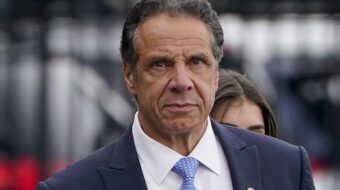WASHINGTON — Condemning Wall Street’s “culture of irresponsibility” that plunged the nation into the worst economic crisis in 80 years, President Obama unveiled a sweeping plan June 17 to strengthen bank regulation and protect consumers from predatory lending and other financial abuses.
Meanwhile, a grassroots coalition has launched a campaign to protect “the financial well-being of working families and communities rather than the profits of Wall Street.”
Speaking from the White House, the president declared, “Millions of Americans who have worked hard and behaved responsibly have seen their life dream eroded by the irresponsibility of others and the failure of their government to provide adequate oversight.”
His plan, outlined in an 88-page white paper, includes creation of a new Consumer Financial Protection Agency (CFPA) “to protect consumers across the financial sector from unfair, deceptive and abusive practices,” including subprime and predatory loans that have forced millions into foreclosure and bankruptcy, a crisis that continues unabated today.
“We must act now to restore confidence in the integrity of our financial system,” the white paper declares. “The lasting damage to ordinary families and businesses is a constant reminder of the need to reform our financial regulatory system and put our economy on track to a sustainable recovery.”
The new agency would insure a “level playing field and higher standards for providers of consumer financial products and services whether or not they are part of a bank.”
Some had expected Obama’s plan to sweep aside the old regulatory framework. Instead, his proposals would buttress the regulatory powers of the Federal Reserve, the Federal Deposit Insurance Corporation, the Securities and Exchange Commission and the National Credit Union Administration. The plan does terminate the Office of Thrift Supervision and creates a new National Bank Supervisor responsible for oversight and enforcement of financial regulations.
The day before Obama announced his plan, a coalition of nearly 200 state and local organizations calling itself Americans for Financial Reform launched a grassroots campaign to “Clean up Wall Street and protect your pocketbook.”
Speaking at a Washington news conference, Heather Booth, director of the coalition, said, “For too long the big banks have been making their own rules and gambling with our money. We’ve come together today to tell them those days are over. The excesses of Wall Street have spilled over into our communities and now our communities are going to take on the fight for real financial reform.”
She warned that winning enactment of financial reform will not be easy, quoting Illinois Sen. Dick Durbin, Democrat, who recently said, “The banks are the most powerful lobby on Capitol Hill … Frankly, they own the place.”
Jim Carr, chief operating officer of the National Community Reinvestment Coalition, told the news conference, “The time has come to refocus regulation of financial services industry on promoting the financial well-being of working families and communities rather than the profits of Wall Street.”
Dr. Rob Johnson, speaking for the Franklin and Eleanor Roosevelt Institute, denounced “free market” ideologues who “willfully ignore the capacity for market failure.”
He added, “Our economy collapsed because of a lack of strong consumer protections. That’s why reform must include establishment of a strong, independent consumer regulatory agency with the authority to protect consumers from dangerous, deceptive financial practices.”
Obama’s white paper analyzes the roots of the financial meltdown, sometimes in polite language. “No regulator saw its job as protecting the economy and financial system as a whole,” the white paper explains, citing AIG, the insurance giant, which escaped bank regulation and oversight because it was not a bank. Teetering on bankruptcy, the federal government poured over $175 billion in taxpayers funds into rescuing AIG.
Obama’s plan calls for expanding the power of the Federal Reserve to regulate all financial institutions. “No financial form that poses a significant risk to the financial system should be unregulated or weakly regulated,” it states.
The white paper describes “new financial instruments” such as “derivatives” that “allowed credit risks to be spread widely enabling investors to diversify their portfolios in new ways and enabling banks to shed exposures that had once stayed on their balance sheets.”
In plain language, this means these financiers manipulated the market, like Enron, to hide bad debt while continuing to float more and more unsustainable loans and lines of credit.
In the years leading up to the crisis, the white paper adds, “risks built up dangerously in our financial system … A credit boom accompanied a housing bubble.”
Through securitization, the paper continues, “mortgages and other loans could be aggregated with similar loans and sold in tranches to a large and diverse pool of new investors with different risk preferences. Through credit derivatives, banks could transfer much of their credit exposure to third parties without selling their underlying loans … However, instead of … distributing risks, this process often concentrated risk in opaque and complex ways.”
It was a bubble waiting to burst.
greenerpastures21212 @ yahoo.co,









